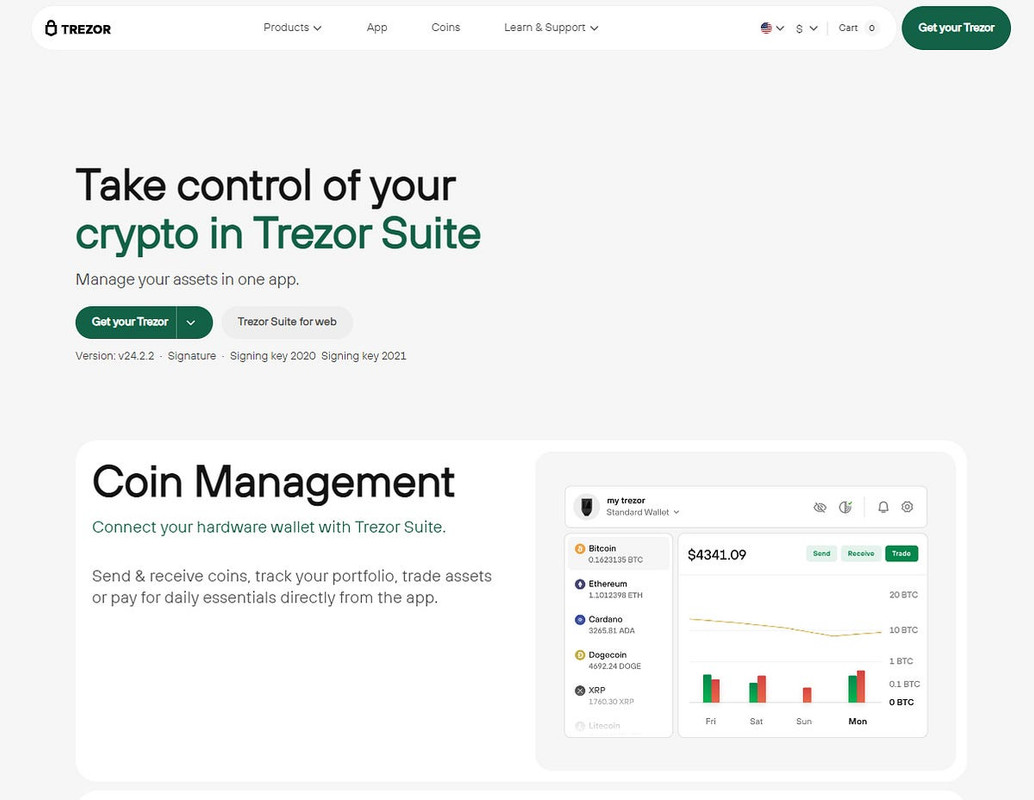Getting Started With Your Hardware Wallet
Your hardware wallet keeps your cryptocurrency safe by storing private keys offline. This guide will walk you through every step — from unboxing your device to setting up security, creating backups, and managing transactions safely.

Why Use a Hardware Wallet?
Hardware wallets are one of the most secure ways to store digital assets. Unlike software wallets that run on internet-connected devices, hardware wallets keep your private keys offline. This isolation protects your funds from malware, phishing, and unauthorized access.
By using a hardware wallet, you maintain full control over your cryptocurrency. Transactions require physical approval on your device, adding an extra layer of protection. Whether you are new to crypto or switching from another wallet, this guide will help you safely set up and use your device.
Step 1: Unbox and Inspect Your Device
Begin by unboxing your wallet. Check that the packaging is sealed and that the device and accessories — USB cable, recovery card, and documentation — are intact. Avoid using the wallet if the packaging appears tampered with.
Connect the wallet to your computer using the supplied USB cable. The device should power on automatically and display a welcome screen. If anything looks unusual, stop and contact the seller.
Step 2: Install the Companion Application
To interact with your wallet, download and install the official companion application. Only download it from the official website or a verified app store. Avoid third-party sources, which may be compromised.
The application lets you manage accounts, send and receive cryptocurrency, and update your wallet securely. After installation, launch the app and follow the prompts to start setting up your device.
Step 3: Update Firmware
Firmware updates ensure your device runs the latest security patches and features. When prompted, follow the instructions to install the newest firmware. Do not disconnect the device during the update, as this could damage it.
Step 4: Create Your Recovery Seed
The recovery seed is the most important backup of your wallet. It is a series of 12, 18, or 24 words generated by the device. Write them down on the recovery card provided — do not store them digitally or take pictures.
- Keep the seed offline in a safe location.
- Never share it with anyone.
- Confirm the words on the device as instructed to ensure accuracy.
Your recovery seed allows you to restore your funds if the wallet is lost, stolen, or damaged.
Step 5: Set a PIN
After recording your recovery seed, set a PIN for device security. This PIN prevents unauthorized access and is required each time you power on the wallet or perform important actions.
Choose a combination that is secure but memorable. The wallet implements increasing delays after failed attempts to prevent brute-force attacks.
Step 6: Access the Dashboard
Once setup is complete, open the companion app dashboard. Here, you can view balances, create or manage accounts, and monitor recent transactions. The interface allows you to manage multiple cryptocurrencies safely in one place.

Step 7: Receiving Cryptocurrency
To receive crypto, select an account and click “Receive.” The app displays a receiving address, which must match the address shown on your device. Verify the address carefully to prevent malware from altering it. Once verified, share it with the sender.
Step 8: Sending Cryptocurrency
To send funds, select “Send” in the app, enter the recipient address and amount, and review network fees. The device will display the transaction details, requiring your confirmation before broadcasting. This ensures security even if your computer is compromised.
Step 9: Adding More Assets
You can add additional cryptocurrencies by selecting “Add Account.” Some coins may require enabling certain networks or modules. Follow the app’s instructions carefully to configure them properly.
Step 10: Security Best Practices
While hardware wallets are very secure, good habits are essential:
- Keep your recovery seed offline and private.
- Never share your PIN or recovery seed.
- Use strong passwords on your computer and companion app.
- Verify transaction addresses on your device screen.
- Consider using a passphrase for added security.
These steps protect your funds from phishing attacks, malware, and unauthorized access.
Step 11: Troubleshooting and Support
If you encounter issues, check the official documentation or support center. Common problems include USB connection errors, outdated firmware, or software glitches. Restarting your device and app often resolves minor issues.
For complex problems, contact authorized support. Never provide your recovery seed or PIN, as legitimate support will never ask for them.